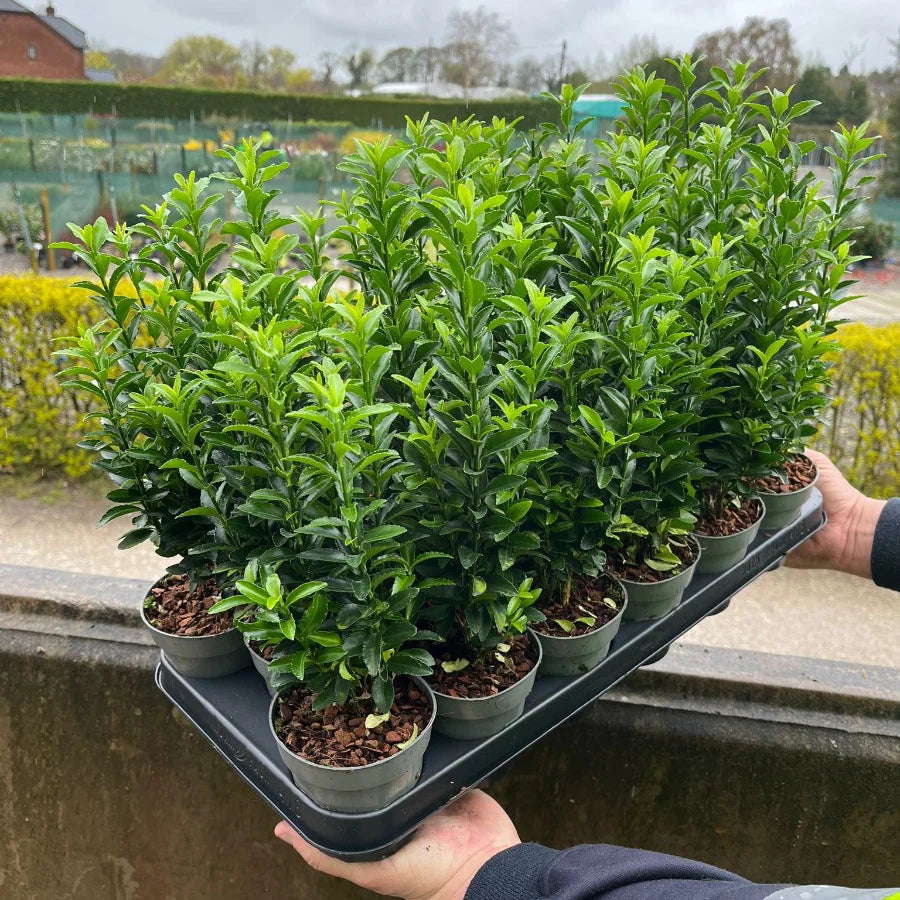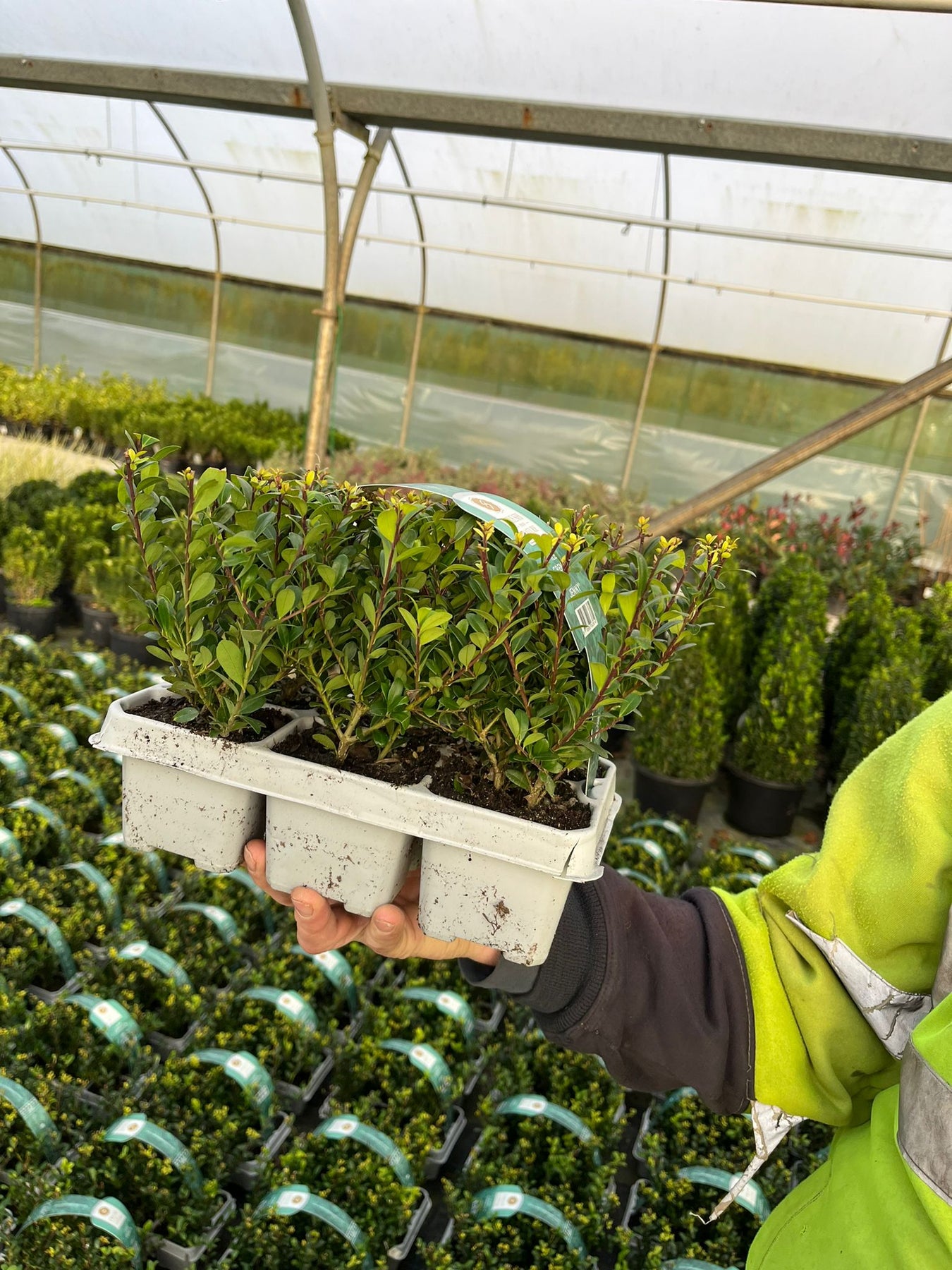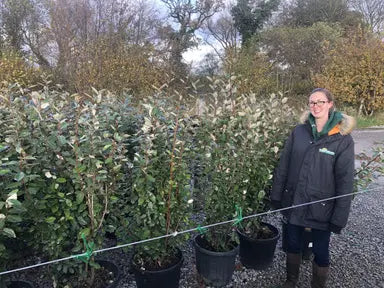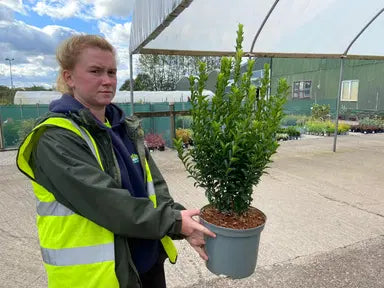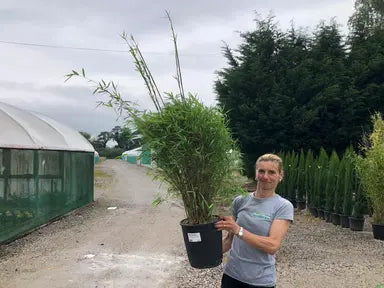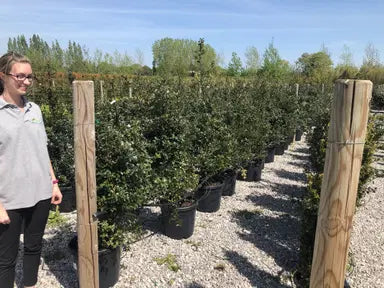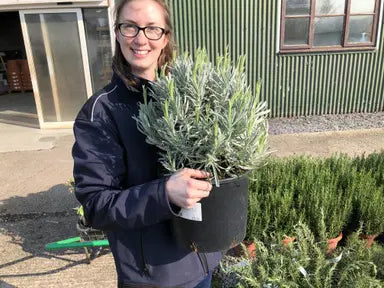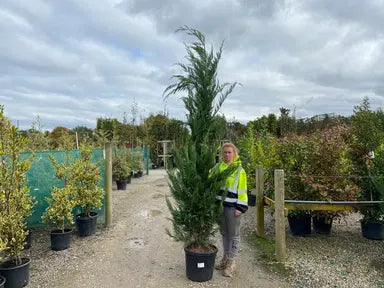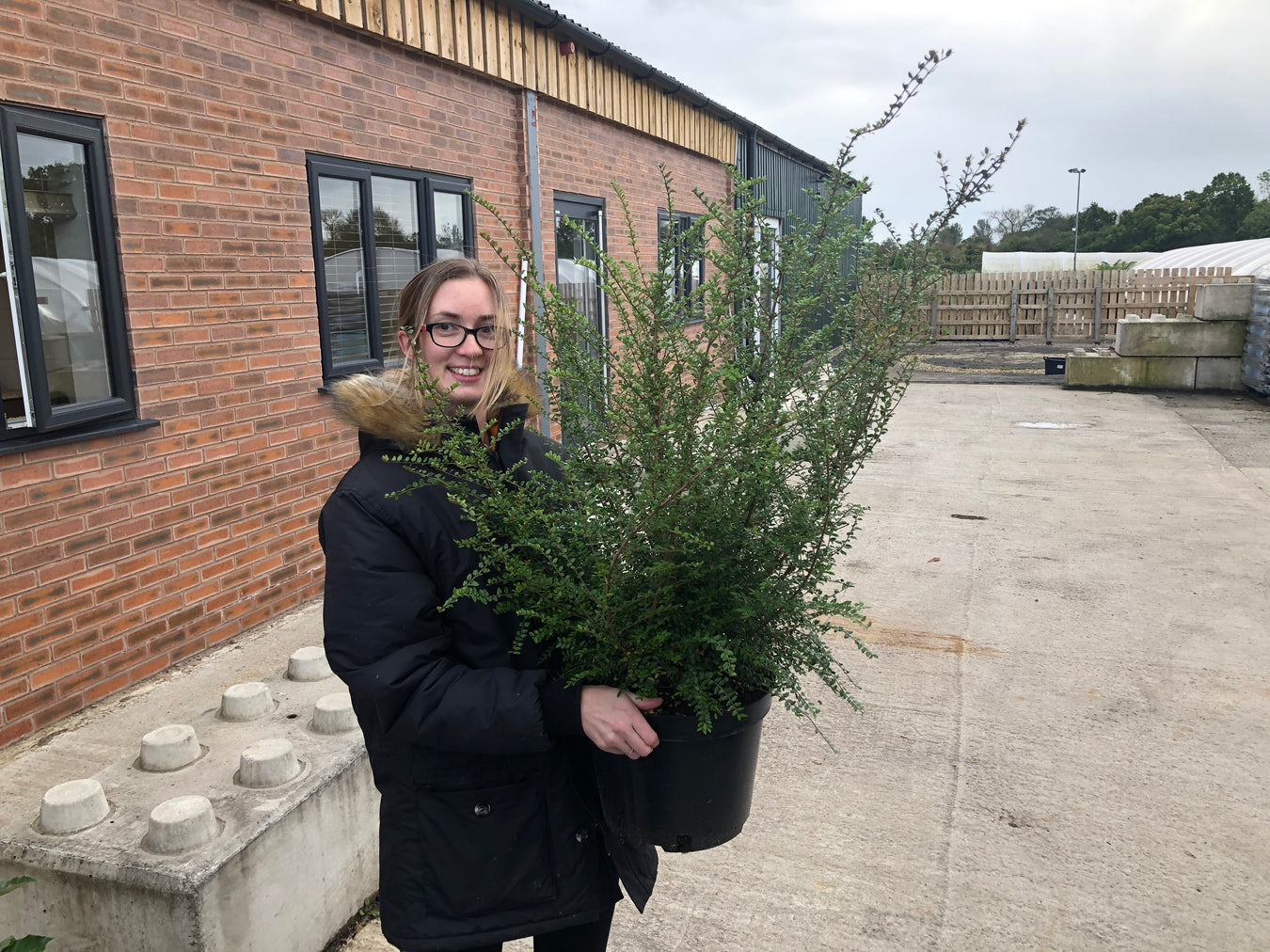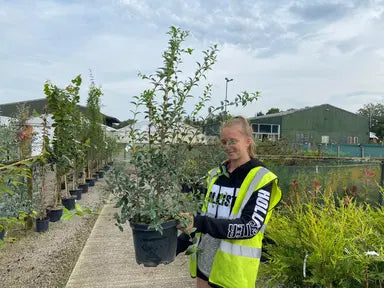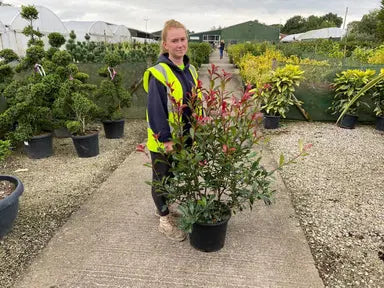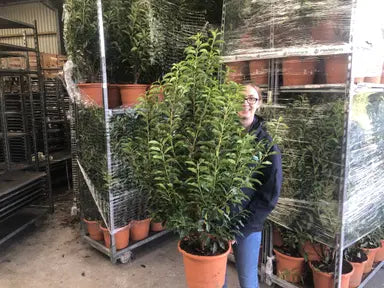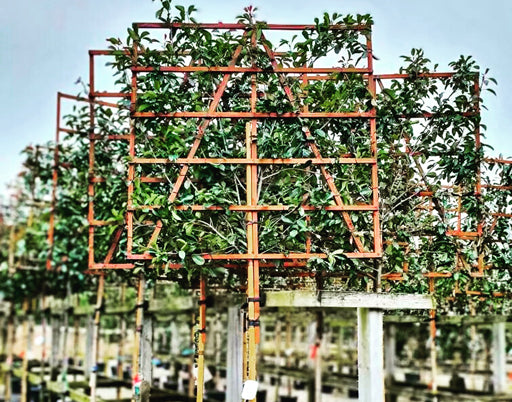Hedging for sale
Hedging plants are a cornerstone of any British garden. Popular with landscapers, low border hedges can be used to provide structure and shape to a garden, whilst taller hedging provides privacy, shade and shelter from the wind.
Here at Grasslands, we grow our hedging plants under the care of our team of horticulturalists. We sell a range of hedges, all with their own unique look and feel, including Laurel hedges, Leylandii hedges and Privet hedges. All of our hedging plants are available at various sizes, from low borders up to 3 ½ metres tall.
Why Choose Evergreen Hedging?
Hedging is a beloved choice for gardens throughout the UK, particularly for those seeking to create a private oasis. For maximum privacy, select a hedge that grows to at least 2 metres in height. In addition to privacy, hedging provides shade, and windbreaks, and adds texture and visual appeal to your garden. Unique foliage, like the vibrant leaves of Photinia Red Robin, can enhance your garden’s aesthetics.
Low-border hedges are popular among landscapers for their ability to define garden areas and create pathways. They can also be shaped into various forms, adding a creative element to your garden design.
While hedging plants are generally low-maintenance, they do require some upkeep. Evergreen hedges usually need trimming once or twice a year, typically in late spring or early autumn. Deciduous hedges, which shed their leaves annually, may need less frequent trimming but still benefit from occasional care. Your choice between evergreen and deciduous hedges will depend on whether you prefer year-round foliage or seasonal changes.
Our Range of Evergreen Hedging
-
Laurel: A traditional choice with rich green foliage that remains vibrant throughout the year. It’s a fast-growing option ideal for creating a dense, private hedge quickly. Plant 2 feet apart to ensure a thick coverage, and steer clear of waterlogged soil.
-
Leylandii: Known for its rapid growth and dense foliage, Leylandii is perfect for creating tall, effective screens. It requires regular pruning to maintain its shape and prevent overgrowth.
-
Privet: A versatile choice for both formal and informal hedges. Privet grows quickly and can be shaped easily, making it a popular option for creating neat, orderly hedges.
-
Box: Ideal for low, formal hedging, Box provides a dense, green barrier. Its slow growth rate means it typically needs trimming just once a year. It thrives in most soil types and is perfect for shaping into intricate forms.
-
Cherry Laurel: An evergreen with striking white flowers in spring and attractive berries in autumn. It grows quickly, providing excellent privacy and a lush, green backdrop.
-
Euonymus: Includes varieties like Euonymus Emerald and Gold, known for their vibrant foliage and adaptability. They add colour and structure to any garden space.
-
Portuguese Laurel: Offers a dense, evergreen hedge with lush green leaves. It is resilient and ideal for coastal gardens.
-
Griselinia Littoralis: An excellent choice for coastal gardens due to its salt tolerance, this shrub has glossy green leaves and grows quickly to form a dense hedge.
-
Bamboo: Choose from varieties like Fargesia for a non-invasive option or Phyllostachys for a more robust screen. Bamboo adds a unique texture and height to your garden.
If you’d like to find out more about the different types of hedges, please read our full guide.
Frequently Asked Questions
What are the best hedging plants for a sunny location?
Hedging plants from hot climates are the best to plant in a sunny location. For example, lavender or bamboo should flourish in full sunshine. Other hedges like the Cherry Laurel and Box Hedging can thrive in lots of different conditions, so will also do well in full sun.
How often should I water my newly planted hedge?
When you first plant a hedge, you should thoroughly water it once or twice a week. After that, you probably only need to water it during a hot spell.
How tall and wide can hedging plants grow?
Different hedging plants can grow to different heights and widths. Some low border hedging plants may only be a couple of feet tall, whilst a Leylandii hedge can grow up to 30 metres high. Check out the product description to find out more about each hedge.
When can you cut hedges?
Generally, we’d recommend trimming hedges during late Spring or early Autumn. If it is a flowering hedge, you should wait until the flowers have gone to trim it back.
Can hedging plants be planted in containers?
You can buy potted hedges, which can be kept above ground in pots. However, if you are planting under the soil, you should remove hedges from pots and containers.
When is the best time to plant hedging plants?
Generally, the best time to plant hedging plants is in early Spring or Autumn, so the roots have chance to take hold before Summer.


